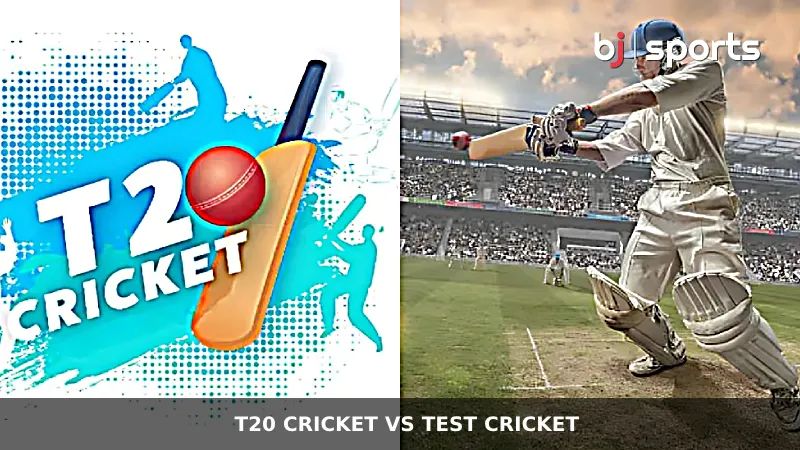The advent of Twenty20 (T20) cricket has revolutionized the game, captivating fans with its fast-paced, high-scoring nature. Since its introduction, T20 cricket has gained immense popularity worldwide. However, this rise in the shorter format has had a significant impact on the traditional longer formats of the game, particularly Test cricket. In this blog post, we will explore the influence of T20 cricket on the traditional cricket format.
Changing Fan Preferences:
T20 cricket has attracted a new generation of fans who seek instant gratification and excitement. The shorter duration and action-packed nature of T20 matches cater to the preferences of modern-day spectators, who often have limited time and attention spans. This shift in fan preferences has led to a decline in Test cricket viewership and attendance, as traditional matches require more time and patience.
Also Read : The Roots, Rules, and Business of T20 World Cup
Evolution of Batting Techniques:
T20 cricket has brought about a revolution in batting techniques. Batsmen are now more inclined towards aggressive stroke play, focusing on power hitting and innovative shot-making. The need to score quickly in T20 matches has influenced batsmen to develop new skills, such as the ability to play unconventional shots like the scoop, ramp, and switch-hit. While these techniques add excitement to the game, they have also led to changes in approach and shot selection in the longer formats, with batsmen becoming more aggressive even in Test matches.
Emphasis on Fitness and Fielding:
T20 cricket’s fast-paced nature demands athleticism and agility from players. Fielding standards have significantly improved, with players displaying remarkable athletic abilities, taking stunning catches, and effecting quick run-outs. The increased importance placed on fitness and fielding in T20 cricket has had a positive impact on the longer formats as well, as teams now prioritize these aspects to maintain high energy levels and put pressure on opponents.
Commercialization and Financial Impact:
The rise of T20 cricket has brought significant commercial opportunities for the sport. The shorter format’s popularity has attracted lucrative sponsorships, broadcast deals, and franchise-based leagues like the Indian Premier League (IPL) and Big Bash League (BBL). The financial success of T20 cricket has led to increased investments in the shorter format, diverting resources and attention away from Test cricket. This has resulted in a financial disparity that has affected the traditional format’s growth and development in certain cricketing nations.
Innovations in Bowling:
T20 cricket has witnessed the emergence of new bowling strategies and variations aimed at restricting batsmen and taking wickets. Bowlers have developed skills like the slower ball, knuckleball, and yorker variations to counter the aggressive batting approaches in T20 matches. These innovations have also influenced the traditional format, with bowlers adopting similar strategies in Test cricket to keep batsmen guessing and break partnerships.
Role of Player Workload and Prioritization:
With the proliferation of T20 leagues around the world, players face increased demands on their time and playing commitments. The busy T20 schedule, combined with international fixtures, has resulted in players prioritizing T20 tournaments over Test matches. Many players choose to participate in lucrative T20 leagues, which has led to a decline in their availability for Test cricket. This trend has affected the quality and competitiveness of Test matches, as teams often field weakened sides due to player workload management and prioritization.
Impact on Cricketing Skills:
T20 cricket’s emphasis on power hitting and aggressive stroke play has influenced the skills and techniques of players across all formats. While T20 cricket has brought excitement and innovation to the game, there are concerns that it may lead to a decline in traditional batting skills, such as the ability to defend and play long innings. Bowlers, too, may focus more on containing batsmen rather than developing the art of sustained spell bowling. Striking a balance between T20’s entertainment value and the fundamentals of the traditional format is crucial for the overall development of cricket.
Influence on Youth Development:
The popularity of T20 cricket has had a significant impact on youth development programs and grassroots cricket. Young aspiring cricketers are increasingly drawn to the glamour and allure of T20 cricket, often neglecting the longer formats. This shift in focus may hinder the nurturing of a solid talent pool for Test cricket, as youngsters may not receive adequate exposure or training in the skills required for the traditional format.
In conclusion, the impact of T20 cricket on the traditional format has been both profound and multifaceted. While T20 cricket has undoubtedly revolutionized the sport, shaping player skills, strategies, and fan expectations, its influence on Test and ODI cricket remains a topic of debate. Ultimately, the challenge for cricket administrators lies in striking a balance between embracing the excitement of T20 cricket while safeguarding the integrity and heritage of the traditional formats. Only then can cricket continue to thrive as a dynamic and inclusive sport for generations to come.
